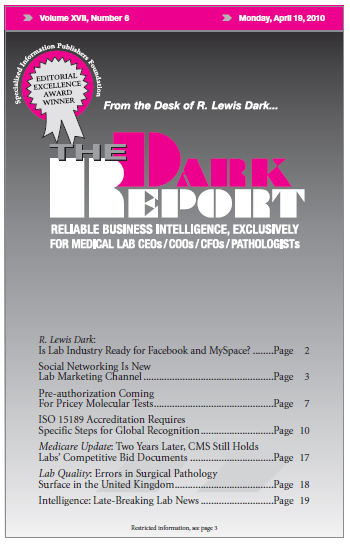CEO SUMMARY: This intelligence briefing is the third in an ongoing series about quality management systems (QMS) and their role in advancing the performance of clinical laboratories and improving the quality of the testing services they provide. ISO 15189 is a set of standards for medical laboratories based on the ISO 9001 quality management system. …
ISO 15189 Accreditation Requires Specific Steps For Global Recognition Read More »
To access this post, you must purchase The Dark Report.


